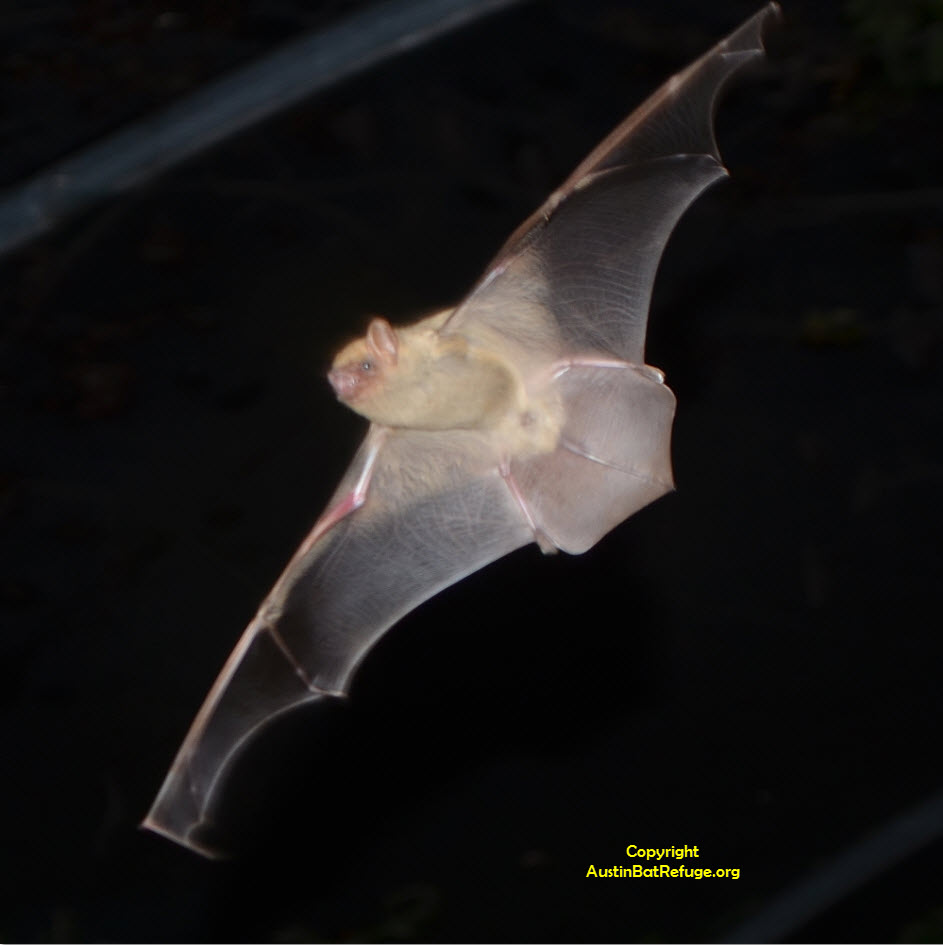Little Guy “LG”
LG, a northern yellow bat, fell from the top of a very tall palm tree when it was cut down. He was severely bruised all over his body and was in such great pain that he could barely lift his head when he was brought to Marsha Price, our amazing, wonderful friend and bat-savant at our Houston branch. Marsha at first thought he had a fracture on his right wing shaft, but after a while she determined that it was just severely bruised. She nursed him back to health slowly but surely over the next few weeks, to the point where he needed the aviary to see if he would be releasable. Now that the mum & pups are gone, we can better tell about LG’s flight skills. Here’s a photo of him cruising the aviary last night and we can see that he has a some damage to a joint in his right wing.

Upon examination, it is obviously inflamed, so we’ll give him Metacam to reduce the swelling and see if he’ll let us check his range of motion in a few days.
He does fly and land quite well, he just doesn’t fly all night like the yellows we released last week. We hope he shows enough improvement to be released before winter, but if not, he’ll be well taken care of while helping with our pest control in the flight cage Winter Garden.

